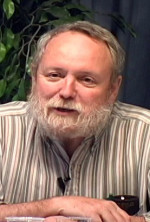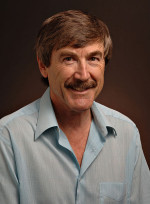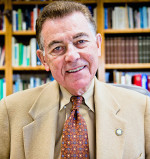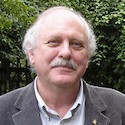Organisms Appear Designed
"Technology when sufficiently advanced is indistinguishable from biology."
Biologists and those in related fields usually agree organisms are very complex and intuitively appear designed, even among those (the majoirty) who reject design in favor of evolutionary causes. This alone does not prove organisms were designed. But it adds weight to the other more quantitive arguments favoring design over evolutionary theory.
Affirming the appearance of design
This list includes who are neutral or hostile to intelligent design still agree that life has the appearance of being very well designed, even though they believe it was not:

|
George Gaylord Simpson
|

|
Francis Crick
|

|
Richard Lewontin
|

|
James A. Shaprio
|

|
Michael Ruse
|

|
Bruce Alberts
|

|
Paul Davies
|

|
Richard Dawkins
|

|
Francis Collins
|
Above, Richard Dawkins clarifies that he is only talking about the illusion of design. He believes that evolution is an adequate mechanism to account for it, and bad designs exist in biology that are contrary to what a designer would create. Many others in this list would agree. But if those claims can be shown meritless (as other articles on the Berean Archive argue) then we're left with the appearance of design and no other explanation for it.
Rejecting the appearance of design
However some biologists reject the appearance of design:

|
Francisco Ayala
|

|
Larry Moran
|
Yet if evolutionary processes destroy faster than they create, it is expected that some designs will become degraded and broken.
Sources
- [^moth]:"Scanning electron micrograph of the proboscis of a moth from family Pyralidae." Wikipedia. 2006.Wikpedia says the image is public domain. Modified it to give it false color.
- [^simpson-plan-purpose]:Simpson, George Gaylord. "The problem of plan and purpose in nature." Scientific Monthly. 1947 . Mirrors: Local screenshot
- [^crick-mad-pursuit-30]:Crick, Francis. "What Mad Pursuit." 1990. Page 30. Mirrors: Google Books
- [^crick-mad-pursuit-138]:Crick, Francis. "What Mad Pursuit." 1990. Page 138.Mirrors: Google Books | Local screenshot
- [^lewontin-1978]:Lewontin, Richard. "Adaptation." Scientific American, 1978. Page 213, bottom of first column. Mirrors: Local screenshot
- [^shapiro-photo]:Photo of James Shapiro from EvolutionNews.org.
- [^shapiro-nat-gen-2005]:Shaprio, James. "A 21st century view of evolution: genome system architecture, repetitive DNA, and natural genetic engineering." Gene, 2005.Mirrors: James Shapiro's website | Archive.org
- [^shapiro-read-write-2013]:Shaprio, James. "How life changes itself: The Read–Write (RW) genome." Physics of Life Reviews 2013.Mirrors: James Shapiro's website | Archive.org
- [^ruse-photo]:Photo of Michael Ruse from UncommonDescent.com.
- [^ruse-rana-2013]:Ruse, Michael. "The Origin of Life: Evolution vs. Design." 2013. At 18:25. This quote comes from Michael Ruse in his debate against biochemist and old earth creationist Fazale Rana on the origin of life.
- [^alberts-photo]:Photograph by Tom Kochel, courtesy of the Department of Biochemistry and Biophysics, The University of California San Francisco. From Wikimedia Commons.
- [^alberts-1998]:Alberts, Bruce. "The Cell as a Collection of Protein Machines." Cell, 1998.
- [^davies-guardian-2002]:Davies, Paul. "How we cold create life." The Guardian. 2002.
- [^dawkins-photo]:Photograph of Richard Dawkins by Mike Cornwell, USA. From Wikimedia Commons.
- [^dawkins-watchmaker]:Dawkins, Richard. "The Blind Watchmaker." 1986, 1996. Page 21.
- [^dawkins-river-page17]:Dawkins, Richard. "River Out of Eden." 2008. Page 17.
- [^dawkins-river-page98]:Dawkins, Richard. "River Out of Eden." 1995. Page 98. Mirrors: Local screenshot
- [^collins-language]:Collins, Francis. "The Language of God." 2006. Page 91.
- [^ayala-photo]:Photo of Francisco Ayala by Xiao Dai.
- [^ayala-1994]:Ayala, Francisco. "Darwin’s Revolution: From Natural Theology to Natural Selection." 1994 .Mirrors: Archive.org
- [^moran-photo]:Photo of Larry Moran from EvolutionNews.org.
- [^moran-bad-design]:Moran, Larry. "Answering two questions from Vincent Torley." Sandwalk. 2016.








